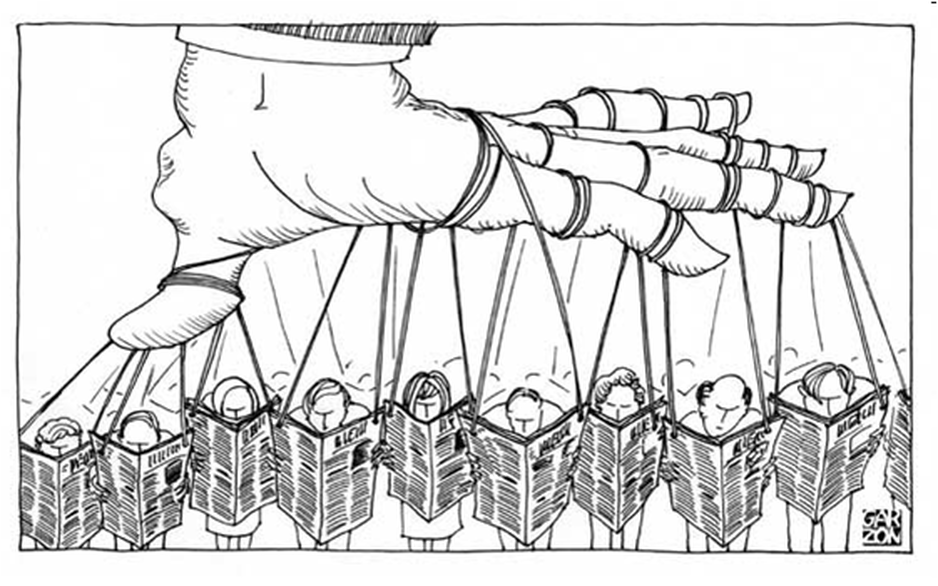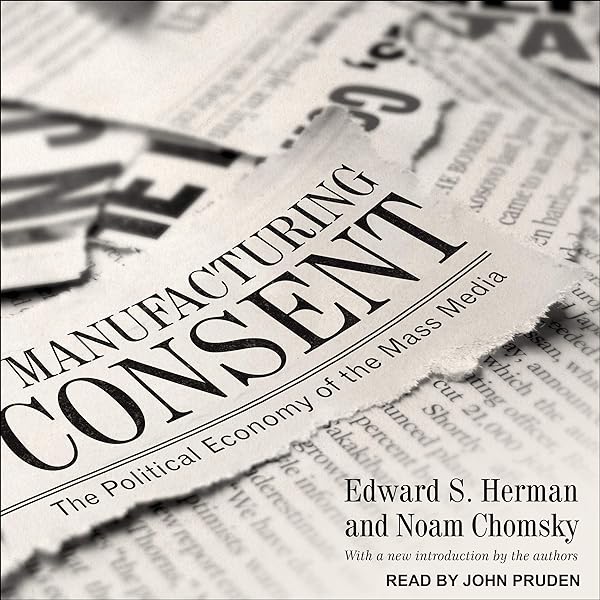What is Manufacturing Consent
Edward S. Herman and Noam Chomsky’s influential book, “Manufacturing Consent,” takes a close look at how mass media operates in democratic societies. They introduce the propaganda model, explaining how media outlets, despite appearing diverse, often serve the interests of powerful elites. The model identifies key filters like media ownership, advertising money, reliance on elite sources, and ideological biases that shape the content presented to the public. “Manufacturing consent” refers to the subtle ways media influences public opinion to align with the interests of powerful groups. Herman and Chomsky argue that these filters work together to limit acceptable discourse, marginalize dissenting voices, and uphold the status quo.

How media ownership, as discussed in “Manufacturing Consent” influence the content and narratives presented to the public
As per “Manufacturing Consent,” who owns the media is crucial in deciding what stories and content reach the general audience. The book argues that even though media outlets may seem diverse, they are often controlled by wealthy elites or big businesses with specific interests. This control influences editorial decisions and content creation to align with their objectives. The result is a limited range of perspectives, a lack of diversity in reporting, and potential bias in how news stories are presented.

According to Herman and Chomsky, what are the key filters in the media system, and how do they contribute to shaping news?
News undergoes shaping through various crucial filters identified by Herman and Chomsky within the media system. These filters encompass ideological biases, reliance on elite sources, media ownership, and advertising funding. The determination of editorial decisions is influenced by who owns the media, while advertising revenue molds content to attract advertisers and meet their preferences. Relying on elite sources narrows the range of perspectives presented in the media, favoring influential opinions. News narratives are additionally influenced by ideological biases to align with prevailing cultural assumptions.
ŌĆ£The mass media serve as a system for communicating messages and symbols to the general populace. It is their function to amuse, entertain, and inform, and to inculcate individuals with the values, beliefs, and codes of behavior that will integrate them into the institutional structures of the larger society. In a world of concentrated wealth and major conflicts of class interest, to fulfil this role requires systematic propaganda.ŌĆØ
ŌĆĢ Noam Chomsky, Manufacturing Consent: The Political Economy of the Mass Media
How advertising revenue impacts media content, aligning with the propaganda model proposed in “Manufacturing Consent”?
As per the propaganda model outlined in “Manufacturing Consent,” advertising revenue significantly shapes media content. The book argues that media organizations rely on advertising funds for survival, and this dependency impacts the nature of the content they produce. To attract advertisements, media companies may modify their content to mirror the preferences of these sponsors. Consequently, the necessity to maintain advertising income can result in a focus on material that appeals to sponsors, potentially influencing editorial decisions and the overall direction of media organizations.

How “Manufacturing Consent” describes the role of news framing and ideological biases in shaping media narratives
In “Manufacturing Consent,” news framing and ideological biases are pointed out as major influences on how media tells stories. The book argues that how news stories are presented and framed plays a crucial role in shaping public perception. When certain aspects of a story are highlighted while others are downplayed or ignored, it affects how people understand what’s going on. The book also underscores how media narratives can be influenced by ideological biases, which stem from societal views and values. These biases may lead to events being portrayed in a way that aligns with common cultural assumptions.


Loved your post very detailed and I really enjoyed reading through it. What do you think the shaping of new would be without social media?